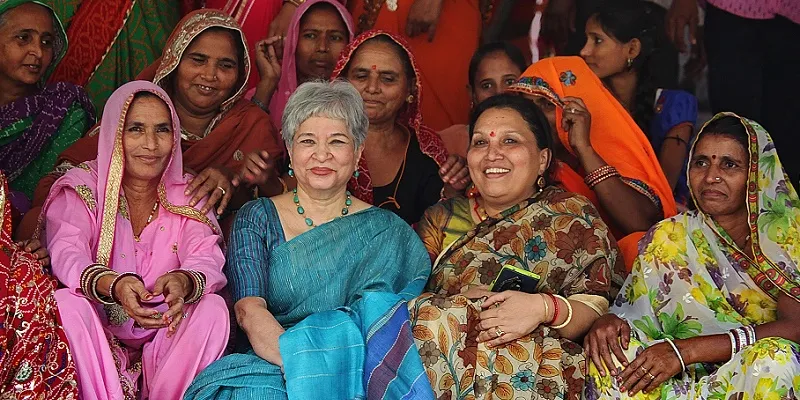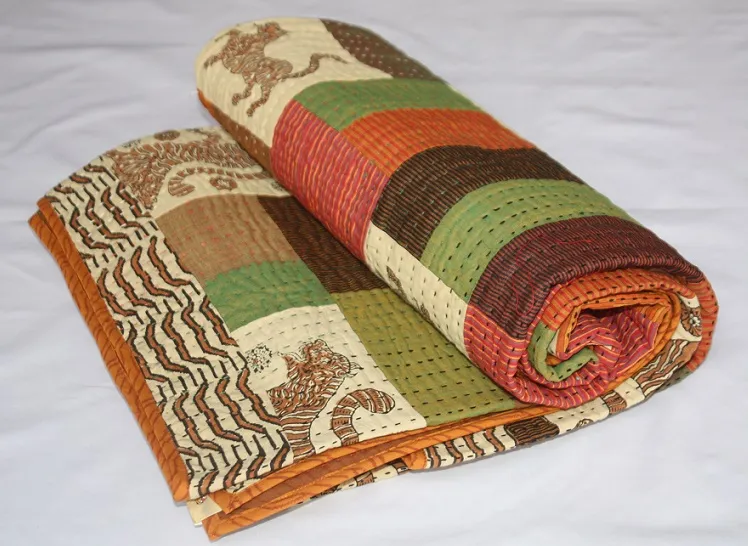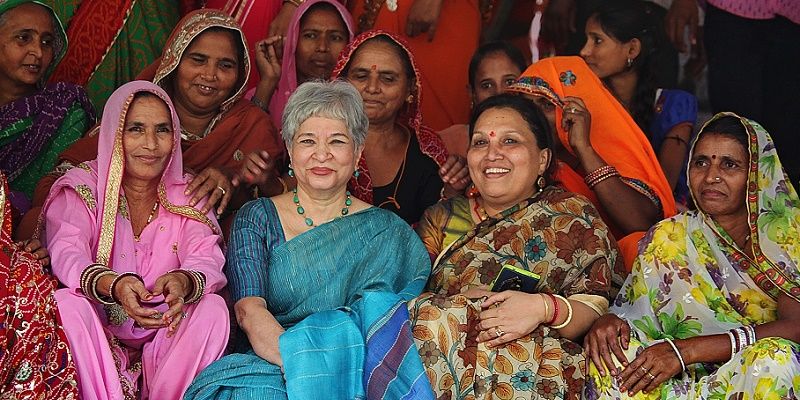The women who lost their homes to the Ranthambore tiger sanctuary today rake in a turnover of Rs 2cr
In 1989, inhabitants of the twin villages of Sherpur and Khilchipur had to be resettled following the creation of Ranthambore National Park. The Ranthambore Foundation reached out to Laila Tyabji of the Delhi-based NGO Dastkar, which helps artisans, mostly women, in converting their traditional craft skills into a means of employment, income generation, and financial self-sufficiency.
Through a long association with Dastkar and with the support of the Ranthambore Foundation, today Dastkar Ranthambore is an autonomous, profitable social enterprise that gives livelihood to over 300 women in five villages across three districts in Rajasthan.
The Dastkar Ranthambore team uses their skills at patchwork, block printing, and black pottery to create quilts, bags, toys, and other souvenirs to bring in a turnover of nearly Rs 2 crore per annum. However, the biggest impact has been socio-cultural — the illiterate women, most of whom were in purdah, are financially independent and confidently managing their organisation today.

Team Dastkar Ranthambore

Ujwala Jodha, the chairperson of Dastkar Ranthambore, has been working with the women for the past 25 years. She explains how she has seen the transformation in the lives and families of the women. She says, "Shameem, originally from Khilchipur village, was among the first women to join the Dastkar Ranthambore initiative. She is currently our treasurer and her husband, Azeez, is a tailor working with the team. Rameshwari has been with Dastkar Ranthambore since its inception and, being a widow, raised and educated her children on her own income. Men are a part of the story too; like Babulal who had almost given up his trade in the 1990s as new synthetic fabrics adversely impacted his craft but Dastkar helped him establish a printing unit for traditional fabric."
From one room to a mechanised factory
The cottage industry, which started in a single-room centre, has grown into a huge entity. In 1990, Rameshwari became the first woman from the team to represent Dastkar Ranthambore at the Delhi Bazaar. She travelled alone and returned safely, thereby giving other women the courage to travel out of their villages. That first sale of goods was worth Rs 67,000 and turned out to be just the beginning.

Dastkar Ranthambore also revived the dying craft of black pottery and hand block printing. A block printing unit was set up and women from Kutalpura village were trained in Bandhini craft. Potters were trained to make hand-sculpted animal figures which would appeal to tourists.
By 1993, the Ranthambhore Foundation gave the team a larger space that is called the ‘kendra’. This space includes the production centre, raw material store, office, sales outlet, a training workshop, and a place for group interactions.
Today the kendra boasts of all aspects of a modern factory like a generator, computer, RO water treatment plant, automatic sewing machines, and cutting machines. Women were initially scared to use machines but now it is just a regular day’s work for them.
The social impact

The women’s lifestyle is unusual for a rural milieu as most of them operate their own bank accounts, live in pukka houses, use gas stoves, and educate their daughters as well as sons.
The biggest impact has been on the attitude towards the girl child. Most girls from the villages go to college today. 25 years ago, this was unimaginable as girls hardly attended school and were married off at a young age. In fact, one of the women took soft loans to educate her daughters, one of whom is now a teacher and the other a nurse. The villagers have also adopted family planning, a topic that was taboo earlier.
The commercial success
In 1992, team Dastkar Ranthambore sold goods worth Rs 8 lakh. By 2015, the sales had gone up to Rs 1 crore 80 lakh. From the beginning, they have had no funding and became profitable at a very early stage. The team started with 15 artisans and the count is 350 artisans today.
The women make most of their sales through their stores in Rajasthan and from Dastkar’s Nature Bazaars in cities like Delhi, Pune, and Bengaluru, and a small chunk comes in through online orders.
Their main source of income is, however, the kendra at the national park (contributes to 63 percent of their sales), export orders (contributes to 18–19 percent), and exhibitions (15 percent). The contribution of the kendra (which was 80 percent earlier) has reduced as Dastkar Ranthambore has increased their export orders to many hotel and store chains across the US and Malaysia. Taj Safari and other wildlife resorts are their big customers because of the motifs of deer and tigers.
The Dastkar Ranthambore story is a beautiful testimony to the impact of education and opportunity, and how a helping hand at the right time can lead to miracles.










![[Funding Alert] Mitron raises seed funding of Rs 2 Cr from 3One4 Capital and LetsVenture](https://images.yourstory.com/cs/2/70651a302d6d11e9aa979329348d4c3e/MitronApp-01-1590676501110.png)
